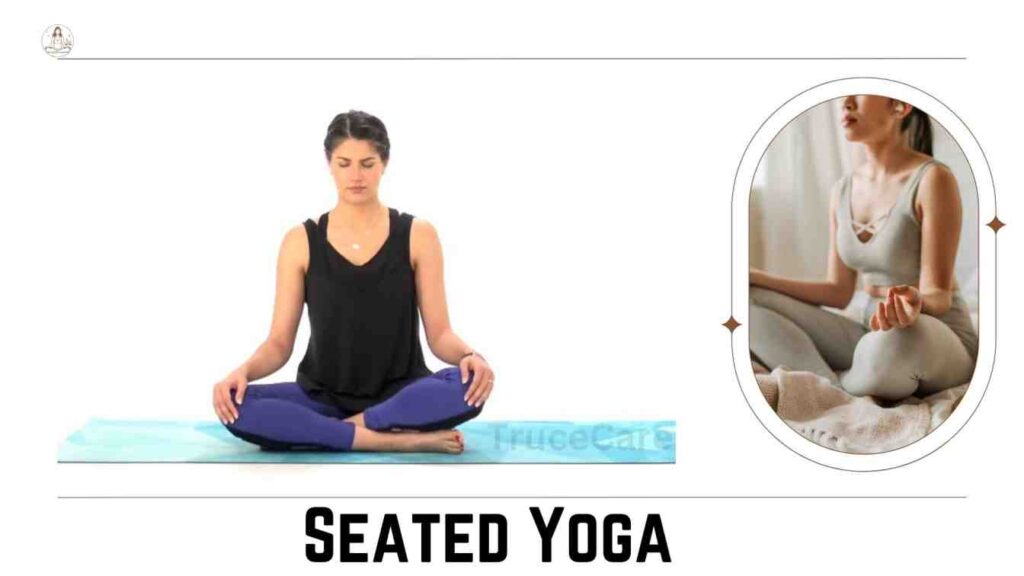From ancient origins in India, yoga is far more than a collection of mere stretches. It represents a journey of the mind, body and spirit toward harmony. Meditation, being the most prominent practice along the path of yoga, means reducing the turmoil in the mind and going further into oneself. While meditating, the right posture is very important, and in yoga, a sitting meditation posture is called asana. The word “asana” actually hails from the Sanskrit in which initially it was “seat” or “sitting position.” However, with time, the term became generic and represented all postures within the framework of yoga. In the context of meditation, though, asana means a steady and comfortable sitting pose.
A seated meditation posture is the basic foundation for meditation practice in yoga. It is not sitting it is sitting in such a manner that the body relaxes, the mind focuses and the breath flows smoothly. These postures were created with the intention of making the yogi meditate for long periods without suffering from uncomfortable feeling in the body. These seated poses are now integral to the most holistic approach to yoga, which has provided people with relaxation and concentration.
Also Read: Morning Meditation: A perfect guide to start you day
Why Sitting Postures Are Important in Meditation
The activity of meditation seeks to achieve a quiet awareness wherein one can have an inwardly focused attention without distraction. An erect seated posture is assisted to create an appropriate atmosphere for this to happen. The erect spine in a seated position enables the practitioner to feel alert at the same time but keeps the body so relaxed so one cannot drift into sleep or restlessness. These postures also allow the free flow of energy in the body, which is among the central tenets of yogic philosophy.
When the body is properly aligned and still, so is the mind. Bad posture on a daily basis creates discomfort, stress, and can even make it hard to focus. However, it’s when we sit in balanced, well-aligned postures that we feel naturally centered and calm. The yogis knew this; hence the heavy emphasis on seated postures for meditation-they make a steady base for the mind to settle and deepen.
Basics of a good meditation posture
A good meditation posture is one that has the feel of being both stable and comfortable. That is to say, the body has to be stable enough to hold its position for some time, but at the same time, not stiff or strained. This is a balance that needs to be achieved; largely, of course, through the spine: straight yet natural, not too stiff. This alignment enables the energy, or prana, to flow freely around and through the body, which is believed to enhance focus and awareness.
The legs and hips are also an important feature in good posture. Sitting cross-legged is most common in that it provides a stable base, but there are alternatives for those people who find this uncomfortable, such as sitting on a cushion, a chair, or even kneeling. The goal is to achieve a soft upward lift at the hips in relation to the knees, thereby releasing strain in the lower back. Calm shoulders and hands resting lightly on the knees or on the lap conclude the pose, providing a sense of relaxation.
Popular Seated Meditation Positions
Through its long history, yoga has evolved many sitting postures which are ideal for meditation. The easiest and most accessible is Sukhasana, or the Easy Pose, where one sits cross-legged with an upright spine. Beginners use this pose particularly because it is comfortable and requires little flexibility. Another well-known posture is Padmasana, or the Lotus Pose. This is a more advanced position, where one places each foot on the thigh opposite it. Padmasana is quite supportive but needs looseness in the hips and knees.
Ardha Padmasana or Half Lotus can be used as a modification in those who can’t get into a full lotus. One foot goes up to the thigh on the opposite side and is kept turned in toward the body, whereas the other leg remains on the floor. Vajrasana, or Thunderbolt Pose, is another wonderful variation where the practitioner sits on his heels, with his buttocks against his heels. This pose is kind to the hips and really good for people whose hips or knees are tight. Thirdly, for a person who can’t sit on the floor, sitting on a chair with feet on the ground is as acceptable as sitting on the floor in this exercise.
The Spiritual Significance of Sitting Postures
Seated meditations hold a deep spiritual significance in yoga. But more than just a physical posture, the seated postures are believed to be a means of connecting with inner self. In many yogic traditions, sitting still was seen as an expression of respect toward the divine energy within and around us. The sitting position itself, with intention, whether it is the sukhasana, padmasana or any other, embodies full grounding, being fully present.
Texts from as far back as the time of Patanjali speak of meditation as one of the first great stepping stones on the path to enlightenment. A relaxed seated position establishes the conditions by which the mind is liberated from its absorption in distraction and, instead, focused inwardly. Belief has it that a calm body simplifies the stilling of the mind; thus, the conditions that exist between the body and the mind find a fit at the heart of yoga philosophy.
How to Find the Right Meditation Posture
Choosing the right meditation posture depends on your body’s needs and comfort level. Flexibility, joint health, and personal preferences all play a role. If sitting on the floor feels challenging, it’s okay to use props like cushions, yoga blocks, or even a sturdy chair. The goal is not to force the body into a position that feels unnatural but to find a posture that supports both comfort and focus.
It could also be excellent for a beginner to begin with Sukhasana or sitting in a chair. After the body gets used to sitting in these postures, you can attempt more stable postures for longer durations, such as Padmasana or Siddhasana. The most important thing about which posture to use is that it allows a person to sit calmly without distractions.
Tips on Practicing Seated Meditation Postures
Practice meditation; it is a skill that needs time to develop. As such, seated postures are not an exception. To make your practice much more effective, it helps to start with shorter sessions and have extended them as the body gets accustomed to it. One can also find some loosening by stretching before sitting in meditation, especially when one has tight hips or back muscles. Sometimes even simple asanas like Child’s Pose or Butterfly Pose help loosen up the body and ready it for meditation.
Props can also be used for support. Sitting on a cushion or folded blanket will allow for lifting the hips up high enough to keep the spine straight. Some may need to have support under their knees if they feel their knees being compressed from sitting cross-legged. Most importantly, listen to your body and modify to avoid discomfort.
In the End
In yoga, an asana means postures that could support meditation. Among those, the most important is the seated meditation posture. It gives stability to the mind and allows it to deeply concentrate within. From a simple one like Sukhasana to a complex like Padmasana, there is a seated posture that will be appropriate for everyone, regardless of the flexibility of the body or the number of years put in for practice.
The beauty of the seated meditation asana is its simplicity. The stillness created by being calm, with the body in alignment, sets the conditions for peace and inner stillness. Whether a beginner or an experienced yogi, the right meditation posture can transform your practice by allowing you to connect with yourself and the present moment. It is over time that these asanas become more than mere physical states; they allow a gateway to a much deeper sense of awareness and harmony.
Read More: Yoga With Goats: Goat Yoga Nashville, It’s Benefits, Poses & Ways to Perform

Jordan Lee – Yoga & Mindfulness Expert
Jordan Lee is a certified yoga instructor and mindfulness coach based in the U.S with a unique blend of expertise in both traditional yoga practices and modern mindfulness techniques. With over 10 years of experience, Jordan specializes in Vinyasa yoga, restorative yoga and meditation. He has a passion for helping individuals cultivate mental and physical balance by combining mindful movement with breathwork. Jordan’s articles focus on accessible yoga practices, mindfulness for stress reduction building mental resilience and how yoga can be a transformative tool for personal growth and well being.
